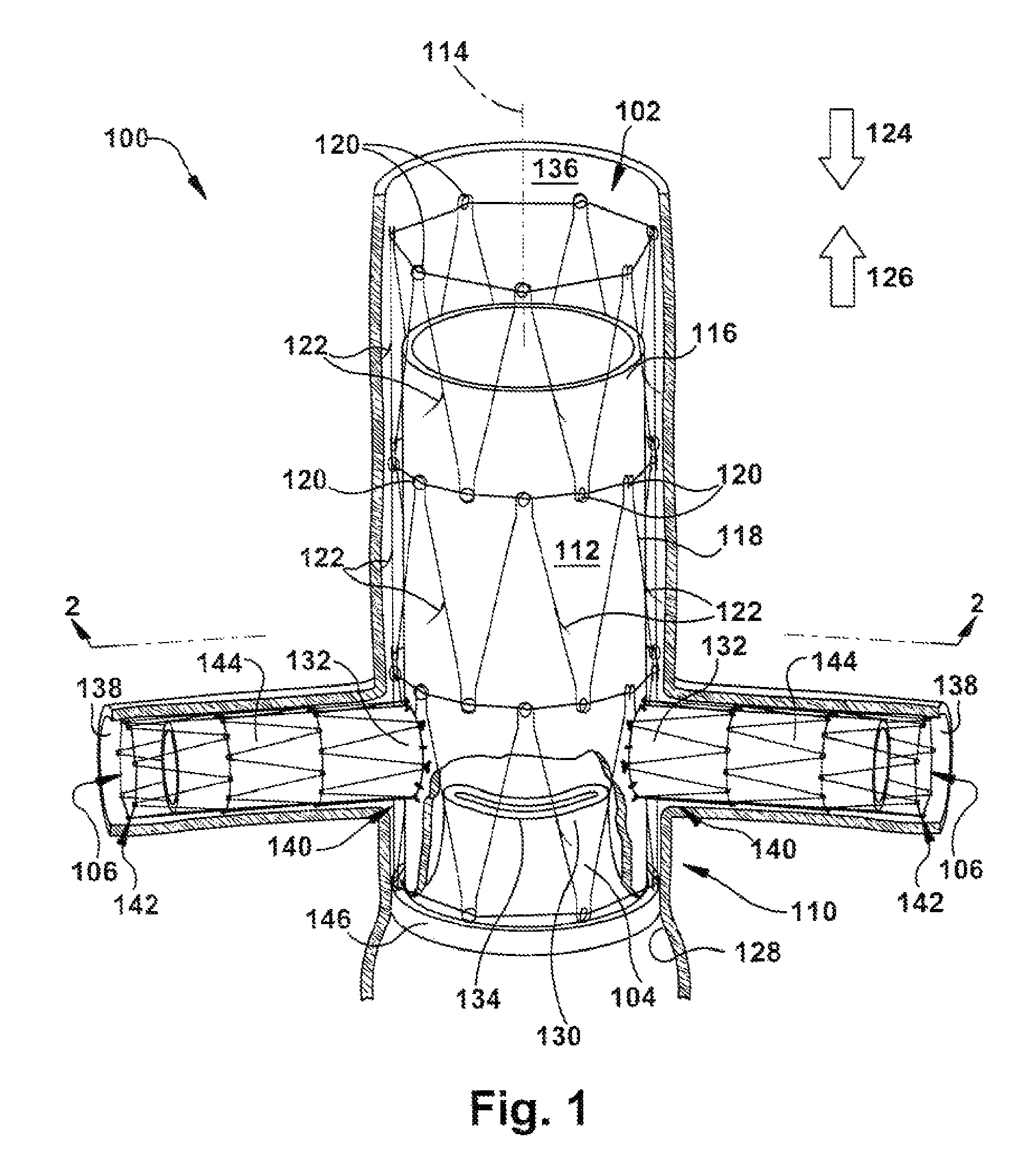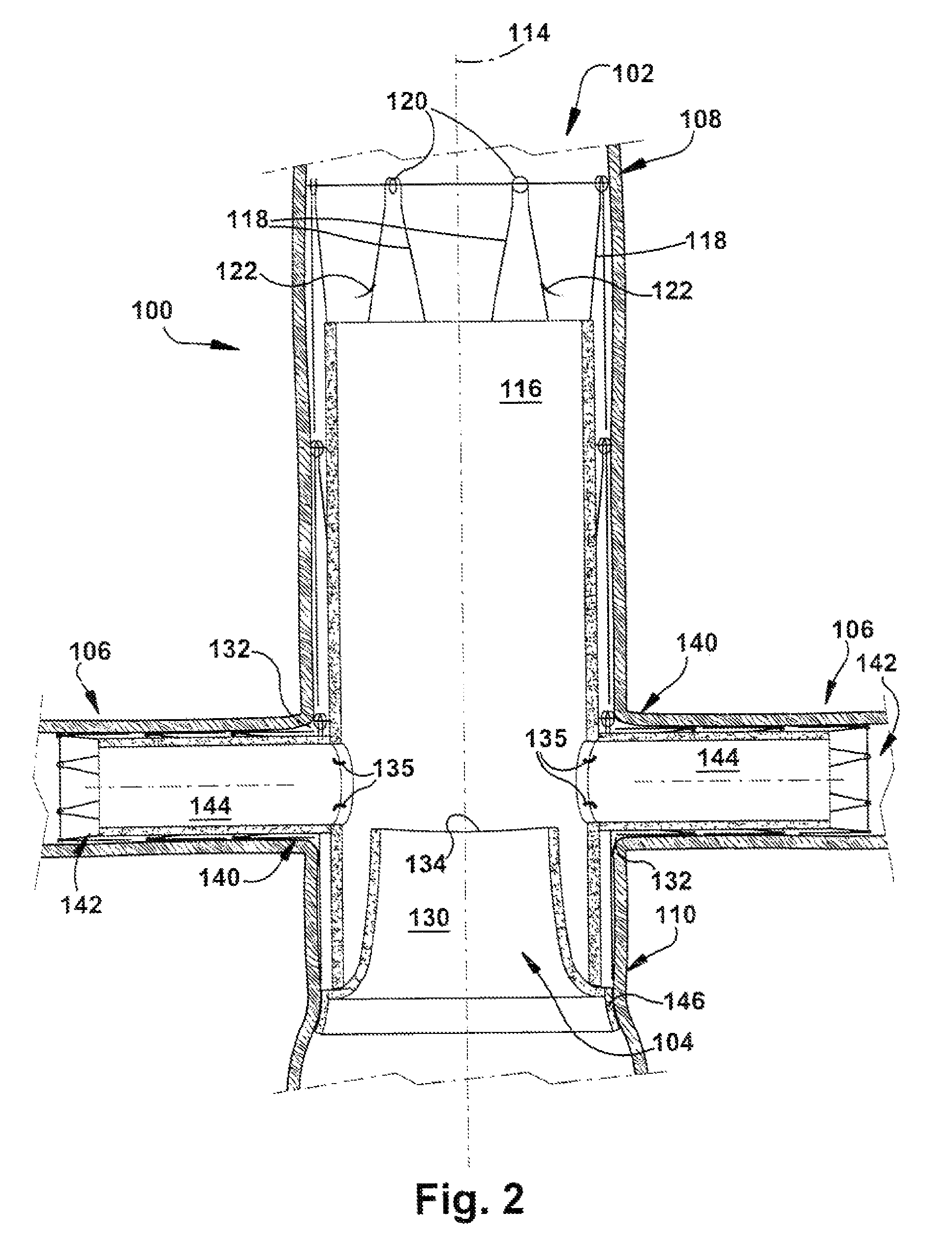Apparatus for repairing the function of a native aortic valve
a technology for repairing the function and aortic valve, which is applied in the field of artificial valve repair for native aortic valve, can solve the problems of insufficiency, valve not opening properly, and congenital valve abnormalities that are so severe, and achieves the effects of preventing recurrence, preventing recurrence, and preventing recurren
- Summary
- Abstract
- Description
- Claims
- Application Information
AI Technical Summary
Benefits of technology
Problems solved by technology
Method used
Image
Examples
Embodiment Construction
[0022]In accordance with the present invention, FIG. 1 depicts an apparatus 100 for repairing the function of a native cardiac valve, discussed herein as being a native aortic valve, of a patient. It should be apparent, however, to those skilled in the art that the apparatus 100 disclosed herein can also be used to repair the function of other cardiac valves, as well as venous valves. The apparatus 100 includes a tubular valve support member 102, a prosthetic valve 104, and two branch support members 106.
[0023]The valve support member 102 may be a self-expanding or balloon expandable stent made from stainless steel, but could alternatively be made from any suitable medical grade plastic or metal, including shape memory metals such as Nitinol. The valve support member 102 has oppositely disposed first and second valve member ends 108 and 110, respectively, separated by a valve member body 112. The valve support member 102 has a longitudinal axis 114 and may be at least partially line...
PUM
 Login to View More
Login to View More Abstract
Description
Claims
Application Information
 Login to View More
Login to View More - R&D
- Intellectual Property
- Life Sciences
- Materials
- Tech Scout
- Unparalleled Data Quality
- Higher Quality Content
- 60% Fewer Hallucinations
Browse by: Latest US Patents, China's latest patents, Technical Efficacy Thesaurus, Application Domain, Technology Topic, Popular Technical Reports.
© 2025 PatSnap. All rights reserved.Legal|Privacy policy|Modern Slavery Act Transparency Statement|Sitemap|About US| Contact US: help@patsnap.com



